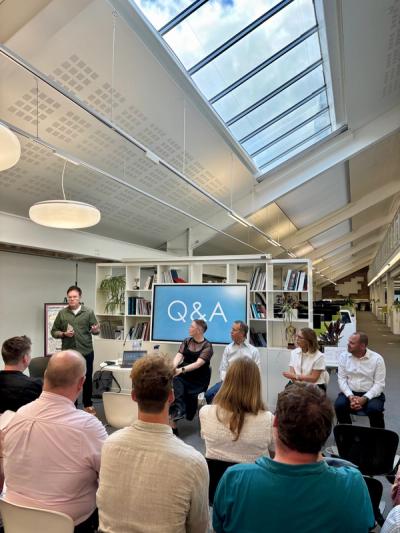Conversations around circular design in commercial spaces are often focused on a narrow understanding of sustainability, with questions such as: How can landfill waste be minimised? How can we design for re-use? What is the trade off between operational and embodied carbon? The relevance of these considerations cannot be understated, but they often forego the opportunity to maximise social impact and understand sustainability as a holistic process.
Last Tuesday, John McRae who is a director at Orms and part of the End Cat A waste campaign, chaired a discussion addressing waste from commercial space fit outs with four inspiring speakers, hosted by Hoare Lea. To start the event, John presented a repair centre in Manchester which fixes furniture and fittings, meanwhile providing opportunities for employment and upskilling. This served as an example of why circular approaches to design should be considered from all angles: the environmental (reduced waste and reduced embodied energy), the economic (long-term savings) and the social (employment opportunities).
The importance of people in widening our understanding of sustainability was demonstrated by Leanne Tritton from the campaign group ‘Don’t Waste Buildings’. While Leanne called for policy clarify and financial incentives to reuse buildings, at the heart of her message she advocated for the importance of engaging with everyone who uses, produces, manages and represents our spaces. Indeed, this approach was made clear by the recognition that all those in attendance already had an interest in driving circular economy approaches to design, making a strong case to engage beyond our immediate circles and drive influence across the built environment industry.

The discussion between the speakers and the audience highlighted the need for a system-wide approach that creates incentives from all angles - planning, financial, office agents, tenancy agreements - to make it as easy and efficient as possible to reuse fittings. Indeed, the breadth of speakers who were all advocating for a similar cause was testament to this: Dr Greg Lavery from the government’s Circular Economy Taskforce, Kael Gillam from an M&E consultancy (Hoare Lee) and Tim Philpott from a fittings manufacturer (SAS International). In a similar vein, this system-wide approach should be extended to how we measure the benefit of our design to factor what people can do, how they might benefit and most importantly how they might feel. The latter was echoed by Leanne’s poignant concluding words: ‘People love buildings they know, even if it’s an ugly building.’
Reach out to Xan on LinkedIn to continue the conversation.
